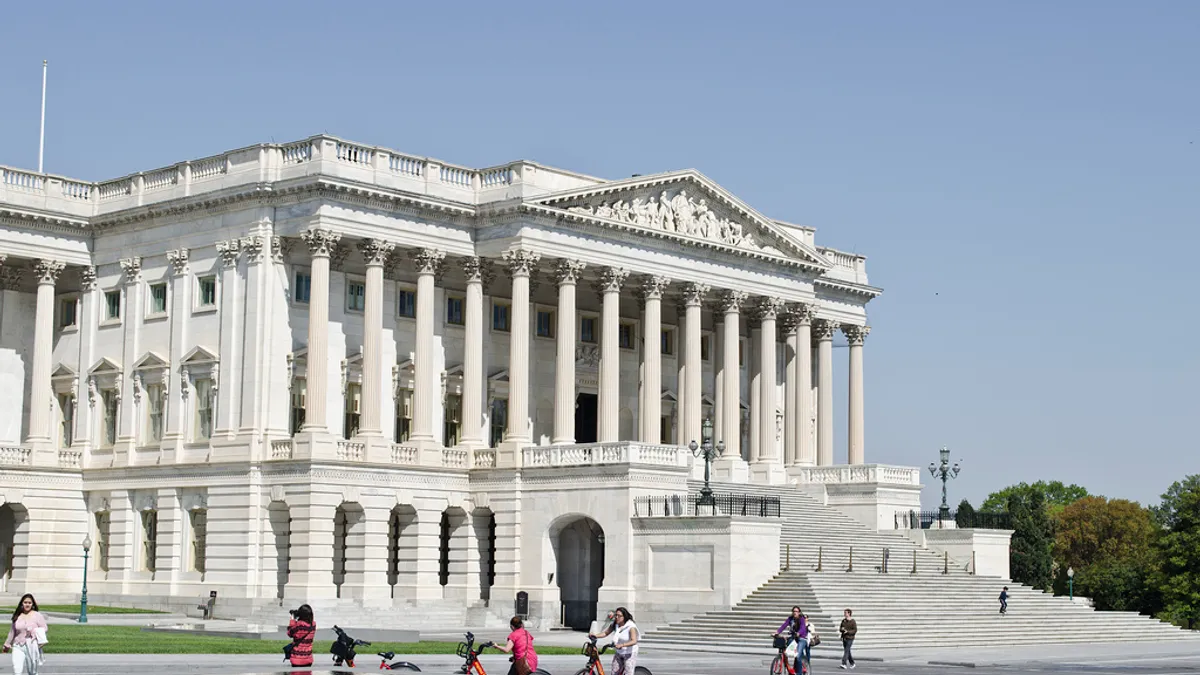While Congress’ rejection of Obama-era school accountability regulations has inserted some level of confusion to the Every Student Succeeds Act implementation process, experts say the impact for states and local school districts should be minimal.
Anne Hyslop, senior associate for policy and advocacy at Chiefs for Change and one of the original writers of the ESSA regulations during her time with the U.S. Department of Education, says states are essentially in the last mile of their planning. They are finalizing ESSA plans that are based on years of work, dating back to even before the Elementary and Secondary Education Act reauthorization was approved.
ESSA became law with bipartisan support at the end of 2015, and the Department of Education, under Obama, wrote regulations that briefly had the strength of law, some of which were announced in the final weeks of the presidency. Congress’ action, allowed under the Congressional Review Act, eliminated those regulations, leaving the Trump Education Department, led by Betsy DeVos, with limited say in how states will have to interpret the more ambiguous elements of the law.
While the department can issue guidance on these topics — which Hyslop thinks it will be important to do — the guidance will not have the force regulations did, and new regulations essentially cannot be passed until the Elementary and Secondary Education Act is once again reauthorized.
Still, congressional action has not changed the game completely.
“The law is still in place. The things states need to do are still in place,” said Carissa Moffat Miller, deputy executive director of the Council of Chief State School Officers, which has been helping states produce new accountability plans. For most states, Moffat Miller said, ESSA is just one part of a more complete vision for improving education systems. The vast majority of work states have done since the end of 2015, then, was not in vain, including work to streamline divergent accountability systems created to satisfy federal versus state requirements.
One area where the lack of regulations could have a very real impact on schools, however, is in the implementation timeline.
The original regulations laid out a sequence for developing data systems to assess school performance, identify the lowest-performing schools, give them time to plan interventions and then implement them. Without any alternative instructions from the Department of Education, Hyslop says all of the accountability measures discussed in the law will take effect in the 2017-18 school year.
It is the specific accountability metrics that have captivated much of the public attention around ESSA planning. Instead of judging schools and districts exclusively by standardized test performance and graduation rates, states are coming up with a number of new metrics, including chronic absenteeism, dropout rates, school climate indices and student access to well-rounded curricula.
Hyslop said chronic absenteeism is the top indicator states seem to be adding to their accountability systems, in part because it’s easy to identify. Schools already submit attendance data to the state. No new data collection systems have to be created.
Some of the more amorphous accountability metrics, including those based on social emotional indicators, are going to be piloted in the coming years before being officially incorporated into high-stakes accountability frameworks.
Hyslop said states are walking the line between giving parents and educators more information about school quality without overwhelming them or limiting the impact of individual indicators.
As a whole, many states have been working toward these expanded definitions of school quality for years. Moffat Miller points to California, Vermont and North Dakota — none of which got waivers from No Child Left Behind regulations – as states where ESSA may prompt more significant changes. But the shift in states that started making changes years ago using waivers is likely to be more nuanced.
Even there, however, ESSA will maintain some level of continuity.
“It’s important to remember this law is asking states to do things slightly differently,” Moffat Miller said. “It’s not a whole new set of requirements.”
States will still have to test all students, have curricular standards and monitor progress by subgroups. ESSA will force states to pay more attention to English learners’ progress toward language proficiency and it will expand flexibility when it comes to measuring school quality. But the next steps for the nation’s education system don’t amount to a massive change in direction. And school leaders should proceed accordingly.





















